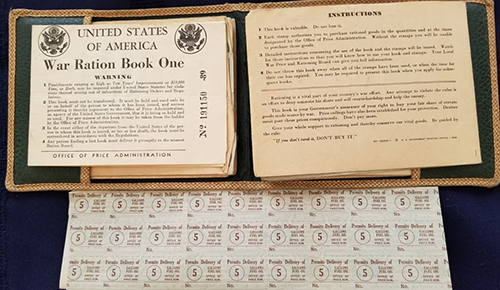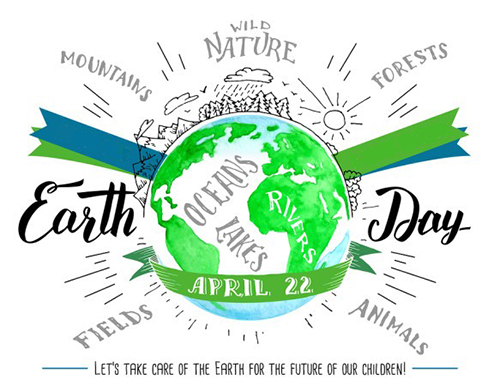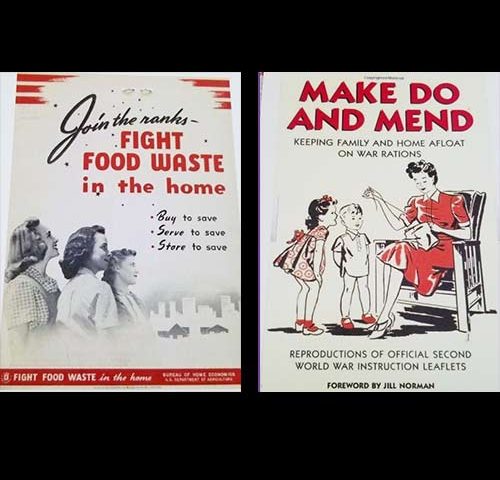World War II and Earth Day: What’s the Connection?

Expect the Unexpected
March 31, 2018
Managing Life and Love without Today’s Technology
August 1, 2018Going through my files recently, I found two World War II instruction leaflets that had been used to support the war effort, and I wondered if those messages were still relevant today. One urged women not to waste food and the other encouraged them to make do with what they had. These flyers were asking families to restrict the use of their resources, but why? Once plentiful items like gasoline, tires, automobiles, sugar, coffee and processed foods were no longer readily available.
Shortly after the attack on Pearl Harbor, the government had instituted policies and practices to ensure that the country’s resources went toward the war effort. Certain commodities like rubber and sugar were already in short supply since Japan now controlled the Pacific territories where they were produced. Also, the US manufacturing companies were being retooled to build ships, planes, tankers and other military equipment. Families could not go into a store and buy as much as they wanted. So the practice of rationing was established to make sure everyone got a fair share and that there was no hoarding of goods.
The first ration books were issued for sugar on May 4, 1942, but limits had already been placed on the purchase of tires and cars earlier that year. When the War Production Board ordered the car manufacturers to stop their assembly lines on January 1, there were half a million unsold cars on the dealer’s lots. These cars were in high demand, but only certain professions such as doctors and clergy were allowed to buy one. By the end of ’42, nine items were rationed and everyone was encouraged to be a conscientious, conservative consumer. The 1943 Sears and Roebuck catalog even listed all the rationed farm equipment, who could buy it and the benefits of rationing. This was indeed a national effort. When the war ended in August 1945, the restrictions were finally lifted on all goods except sugar which continued to be rationed through June 1947.

Do you think it would be easy for Americans to deal with rationing and forced conservation today? Unlike our parents and grandparents who struggled and lived through the Great Depression and the war, we are not accustomed to frugality or limited consumption. The post-war economics were partially to blame for this. When the civilian production engines roared back to life, they created an unprecedented abundance that has continued over the past 70 years. Nationally we have only had to conserve on rare occasions such as the recent droughts or during the oil crisis in the 70’s. Remember waiting in the long gas lines and fearing that the fuel would be gone once we got to the pump. Gas rationing was a major inconvenience. Nobody liked those restrictions.
Yet conservation during the war years was a patriotic act that gave everyone an opportunity to support their country. Every household had ration books and even children helped collect scrap metal and rubber items such as raincoats, garden hose and swimming caps for recycling. Women were mainly responsible for managing these household restrictions, and they did a great job, finding creative substitutes for sugar, coffee, meat, cheese and more. They also did without silk stockings, new shoes and fashionable attire, and they willingly accepted these limitations for their county. It was their duty!
Today, could we make similar sacrifices not just for our country but for our planet? On April 22, we have a chance to do something as we celebrate Earth Day. First observed in the United States on April 22, 1970, it is not a patriotic holiday but perhaps it should be. Since 1990 it has been observed worldwide, and in 2009 the United Nations officially renamed it International Mother Earth Day.
During the war years, the Allies worked together to bring peace across the world. In 2018 what can we learn from this World War II generation that applies to Mother Earth? Like them, we all have a stake in the future and we must work together to protect our interconnected ecosystems. So, what would you be willing to give up for our planet? Would you reduce your water consummation, turn down your thermostat or use your own water bottle and cloth grocery bags? There are so many ways that we can make a difference even without making a sacrifice. The message of those World War II leaflets are still relevant…we must use our resources wisely. Find what works for you and celebrate our amazing planet on International Mother Earth Day.


